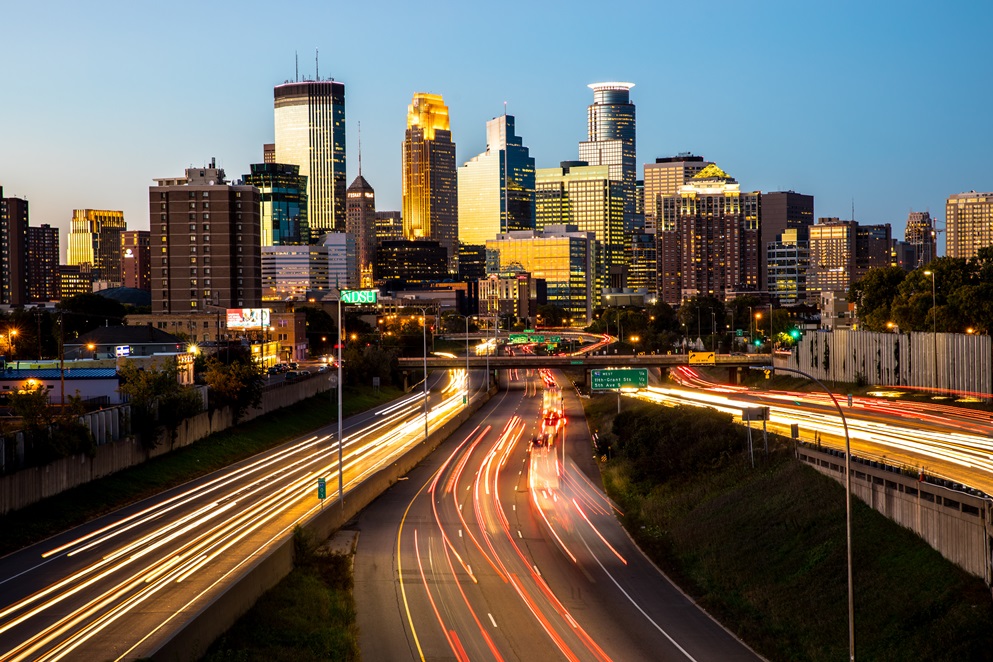It’s feasible to cap freeways in the Twin Cities in order to reclaim land given over to cars six decades ago, though it matters where the cap is placed. Economics, however, should not be the only factor in deciding whether the projects are worth doing.
Those are among the conclusions of a panel put together by the Urban Land Institute Minnesota at the request of the state’s Department of Transportation to look at the potential for freeway lids. Sometimes called land bridges, the concept is to help reconnect communities disrupted by freeway construction.
In preparation for reconstruction of freeway segments that are nearing the end of their useful lives, the Minnesota Department of Transportation (MnDOT), under the leadership of Commissioner Charlie Zelle, approached ULI Minnesota with a 21st century strategy for how interstates could be rebuilt to restore connections in adjacent neighborhoods and foster new growth opportunities on MnDOT right of way.
This strategy involves constructing “lids” above the roadway and preparing freeway embankments to support development. The focus on how freeways impact adjacent neighborhoods is endorsed by Secretary Anthony Foxx of the U.S. Department of Transportation (USDOT) who has made restoring communities a centerpiece of his administration in recognition of the damage freeway construction caused to communities when they were first built in the 1960s.
The study is part of MnDOT’s preparation for rebuilding I-94 through the cities of Minneapolis and St. Paul. And it comes at a time when federal transportation officials are looking at using future freeway investments to repair the damage done by construction in the 1960s and ’70s, damage disproportionately done to poor and minority communities.
The report offered nine recommendations to Mn DOT in order to launch the Healthy Communities Initiative and maintain momentum:
- Form a quasi-governmental public-private partnership led by a small team of leaders to oversee a
corridor-wide strategy to restore and enhance physical, environmental, economic and social health. - Form a 501(c)(3) nonprofit organization and identify a fundraising champion to raise money for
recreational and cultural amenities and to fund maintenance and operations through an endowment. - Put an experienced, professional leader in charge of managing and delivering the Initiative as a whole
and set an aggressive timeline. - Make freeway bridge locations development-ready when rebuilt and do as much as possible now so
that neighborhoods and the development community can seize opportunities as they arise. - Conduct a corridor-wide parking and transportation study to evaluate district parking at lids and how
transit at lids can provide access to jobs. - Develop market-based conceptual plans at Rondo and I-35W/Washington Ave and pursue land use
consensus at Farview Park. TAPs or similar analyses can prepare these areas for lid projects when the
time comes. At Farview Park, the City of Minneapolis, the Minneapolis Park and Recreation Board, and the
neighborhood need a shared vision on the future of the industrial land along the river. - Mandate a mechanism to ensure the inclusion of affordable housing to deliver a full range of housing
choices, including a range of affordability throughout the corridor. - Use the corridor as a showcase for art, architecture, design, and innovative engineering and
technology best practices by engaging artists, architects and designers who will want opportunities to
showcase their work. Look to the future of transportation and study emerging best practices. - Practice effective community engagement and support cultural connections by working with
community leaders and valuing public art, greenspace, and great design throughout the corridor.
“It isn’t often that we get alignment of this nature,” said Caren Dewar, executive director of the state chapter of the Urban Land Institute, at a formal rollout of the report on November 8, 2016 in St. Paul. “We have alignment for these ideas at the national level and the local level.”
Photo of Minneapolis via Adobe Stock.
See full article by Peter Callaghan in the Minneapolis Post.

